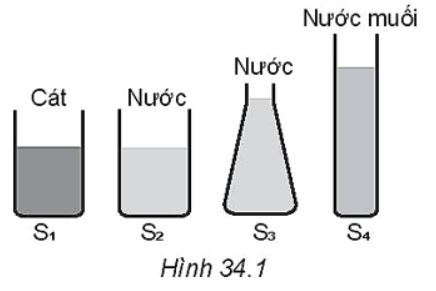Đối với sự phát triển của xã hội loài người, môi trường tự nhiên là nhân tố như thế nào?
Đề thi giữa HK2 môn Địa lí 10 - Kết nối tri thức là tài liệu giúp học sinh ôn luyện và nắm vững kiến thức đã được học. Thông qua các câu hỏi trắc nghiệm đa dạng, học sinh có thể củng cố khả năng tư duy, phân tích và nâng cao khả năng ghi nhớ cũng như vận dụng kiến thức vào giải quyết các vấn đề thực tiễn.
Câu hỏi liên quan
Cú pháp đúng của câu lệnh lặp for?
Hãy cho biết trên bản vẽ nhà, đâu là kí hiệu cửa nâng hoặc cửa cuốn?
Cho các chất sau: NH3, CH3CH2NH2, C6H5NH2, H2NCH2COOH. Chất có lực bazơ mạnh nhất là
Con lắc lò xo nằm ngang dao động điều hòa, vận tốc của vật bằng không khi vật chuyển động qua
Điểm nào không thể hiện mặt tích cực của toàn cầu hoá kinh tế?
Nguyên tử aluminium (Al) có 13 proton và 14 neutron. Kí hiệu nguyên tử của nguyên tố này là
Trong giảm phân II, các NST có trạng thái kép ở các kì nào sau đây?
Sự so sánh nào sau đây về áp suất của các chất trong bình tác dụng lên đáy bình là đúng
Cấu tạo động cơ xăng 2 kì có mấy cửa khí?
Read the following passage about the Pathways from Today's Actions to Tomorrow's World and mark the letter A, B, C or D on your answer sheet to indicate the best answer to each of the following questions from 31 to 40.
As we stand at the crossroads of environmental decision-making, the actions we take today will shape our world in 2050. Scientists warn that we're skating on thin ice with current consumption patterns and carbon emissions. Global temperatures could rise by 2-4 degrees Celsius unless significant changes occur within the next decade. Many countries have pledged to achieve carbon neutrality by 2050, but these promises require immediate implementation. Individual choices in transportation, energy usage, and consumption can collectively influence whether future generations inherit a sustainable planet or face severe climate consequences.
[I] Technological innovation represents our greatest hope for addressing environmental challenges by 2050. [II] Renewable energy sources like solar and wind are becoming increasingly affordable, potentially replacing fossil fuels entirely within thirty years. [III] Electric vehicles may dominate transportation networks, while vertical farming could transform food production in urban areas. [IV] However, these technological solutions must be developed and deployed equitably to avoid creating new disparities between wealthy and developing nations.
Social structures will undergo dramatic transformation by 2050 as demographic shifts reshape communities worldwide. Aging populations in developed countries will necessitate new approaches to healthcare, retirement, and social support systems. Meanwhile, climate migration may force millions to relocate from vulnerable coastal and drought-prone regions. Education systems must evolve to prepare our students for jobs that don't yet exist, emphasizing their adaptability and lifelong learning. Cities will need to become more resilient, incorporating green spaces and sustainable infrastructure to support growing populations.
Economic models must fundamentally change by 2050 to balance prosperity with environmental responsibility. The traditional focus on continuous growth may shift toward measuring success through wellbeing indicators rather than GDP alone. Circular economy principles will likely replace linear production models, with products designed for reuse and recycling. Resource-sharing platforms may become more prevalent, reducing individual consumption while maintaining living standards. Companies implementing genuinely sustainable practices will thrive, while those clinging to environmentally harmful methods may disappear entirely. The transition presents both challenges and opportunities for businesses willing to embrace innovation and sustainability.
Which of the following is TRUE according to the passage?
Mark the letter A, B, C or D on your answer sheet to indicate the sentence that is closest in meaning to each of the following questions:
People should not throw rubbish in the park. People should not cut down the trees in the park.
Khi có hỏa hoạn trong phòng thực hành cần xử lí theo cách nào sau đây?
Bọt khí nitrogen (coi là khí lí tưởng) có đường kính là 1 (mm) ở độ sâu 20 (m), khi lên đến mặt nước đường kính của bọt khí này xấp xỉ bằng bao nhiêu trong điều kiện nhiệt độ không đổi?
Mark the letter A, B, C, or D on your answer sheet to indicate the best arrangement of utterances or sentences to make a meaningful exchange or text in each of the following questions from 13 to 17
a. Mr Willis: It was announced on TV that a new wildlife park will open to the public next week. Would you like to visit it?
b. Mr Willis: Simon, I've just heard some good news.
c. Simon: What's it about, Dad?
Dầu mỏ, khí đốt có ở vùng biển nào sau đây của nước ta?
Nội dung nào sau đây là vai trò của Liên hợp quốc về bảo đảm quyền con người, phát triển văn hóa, xã hội?
Nội dung nào sau đây là một trong những vai trò của các ngành khoa học tự nhiên và công nghệ đối với Sử học?
Hoạt động sản xuất là hoạt động con người sử dụng các yếu tố sản xuất để tạo ra các sản phẩm đáp ứng nhu cầu của đối tượng nào?
Hệ thống định vị toàn cầu GLONASS là của quốc gia nào sau đây?
Ý nào dưới đây không đúng khi bàn về vấn đề đạo đức kinh doanh?
















